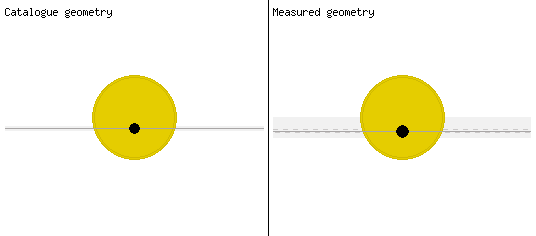TrES-1 is an extrasolar planet, orbiting the star GSC 02652-01324 in the constellation Lyra. It is located about 500 light-years from Earth.
Due to its mass and radius the planet is quite possibly a Jovian Planet, with a composition similar to that of Jupiter. It has a surface temperature of about 1060 K, due to its great proximity to its star (it is only 4% of the distance between the Earth and the Sun), so it is classified as a hot Jupiter.
It was discovered on August 24, 2004, thanks to the group of astronomers Roi Alonso, Juan Antonio Belmonte and Hans Deeg of the Institute of Astrophysics of the Canary Islands, through observations from the observatory of Las Cañadas del Teide, in Tenerife, Spain.
The presence of a second planet in this known system, transiting the planet will cause the time between transits to vary. These variations can be used to constrain the orbital elements and mass of the disturbing planet. The set of transit times of the TrES – 1 system contained in Charbonneau et al . ( 2005 ) . We found no convincing evidence of a second planet in the TrES-1 system from that data. For a more detailed analysis, we limit the mass that a disturbing planet could have as a function of the semi-greater relationship between axes of the two planets and the eccentricity of the disturbing planet. Near the lower order, mean-motion resonances (within the fractional deviation ~1%), we find that a secondary planet must generally have a mass comparable to or less than the mass of the Earth – demonstrating that these data are the first to have sensitivity to sub-Earth-like mass planets. The sensitivity of this technique to the mass of the disturbing planet is compared to future high-precision radial velocity measurements.
https://arxiv.org/abs/astro-ph/0509656







